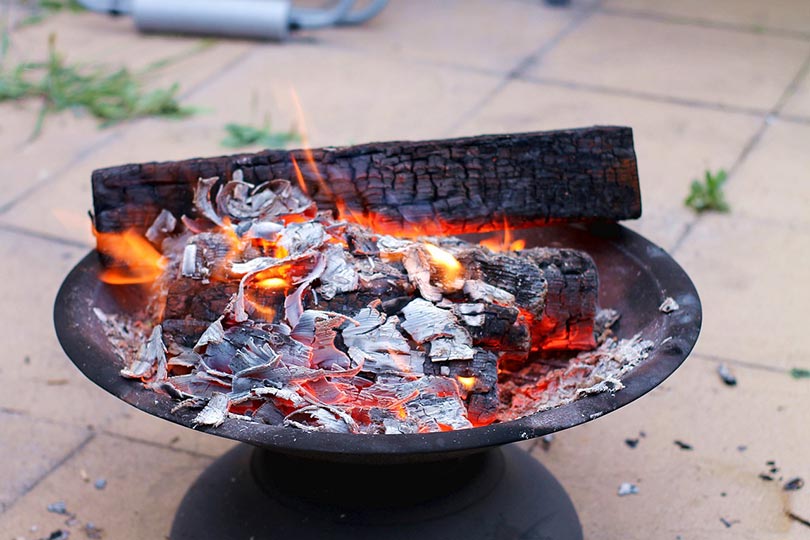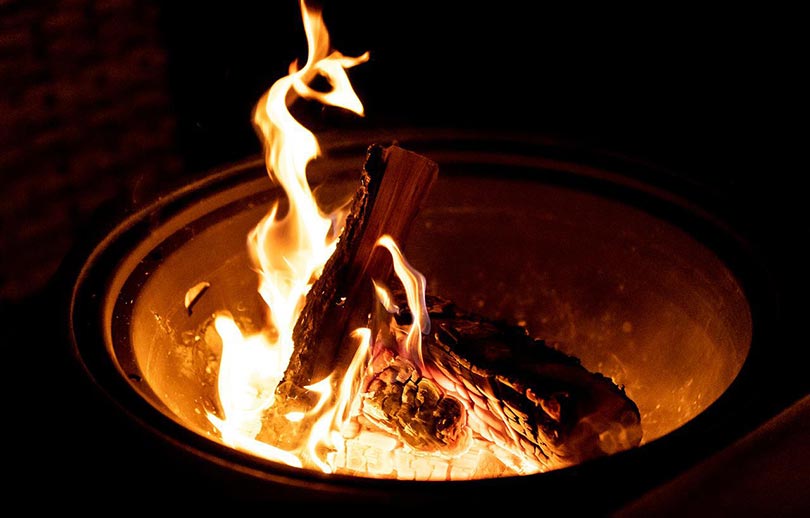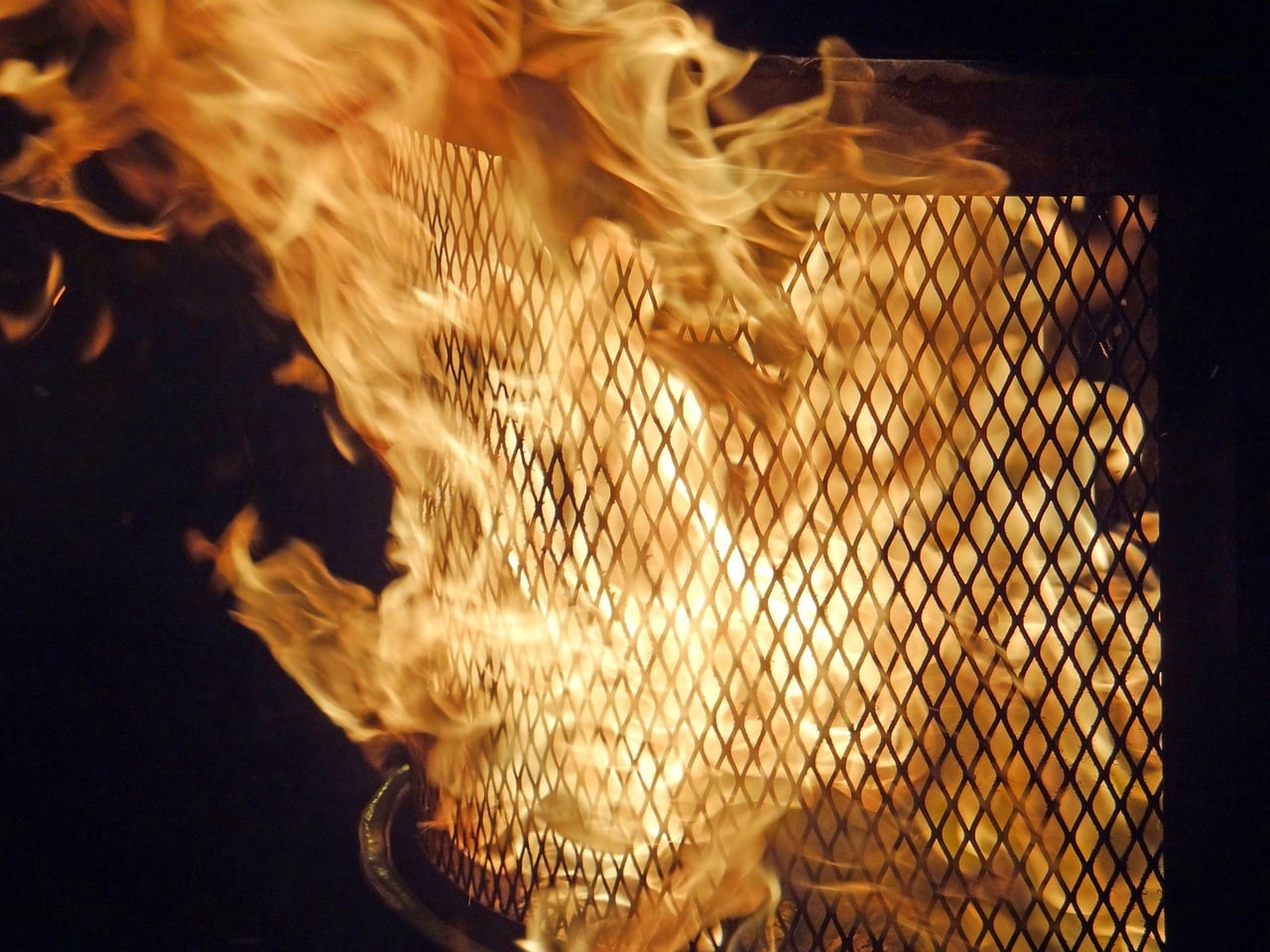How Does a Smokeless Fire Pit Work? The Interesting Answer!
-
Pete Ortiz
- Last updated:

If you’re a big fan of camping and getting together with friends or family on a chilly night, a fire pit is a must. First, it keeps you nice and warm, making the party much more enjoyable. Second, the dancing flames create the perfect atmosphere for trading scary tales. The only downside is excess smoke that takes over the entire neighborhood. But you can always go with a smokeless fire pit instead.
These heating systems are specifically designed to keep the fumes to a minimum. The price is a bit steep, but if you’re ready to commit to a more efficient, environmentally friendly, and low-maintenance device, a smokeless fire pit will be a great investment. So, how does it work? What’s the best pick for your outdoor activities? We have the answers right here!
How Does It Work?
At the heart of every smokeless fire pit lies secondary combustion and a double-wall design. If you’ve ever used a traditional fire pit, you know that most of the ash, sparks, and hot air escape into the atmosphere through the opening—that’s how most heating systems work. A smokeless pit, in contrast, uses two streams of oxygen instead of one. Primary combustion is the burning of solid or liquid fuel. Secondary combustion is when the pit burns the smoke.
Smokeless fire pits recycle 90–100% of the smoke/burn particulates. Essentially, the smoke is the fuel that received very little oxygen or heat while the pit was still firing up. But, by letting fresh air/oxygen in and heating it to extreme temperatures between the two walls, the pit mixes it with the smoke and creates secondary combustion, burning it down before it leaves the pit. More good news: since nothing is going to waste, the pit keeps the fire going for longer. The fire is bigger, too.
However, if you put damp wood into a smokeless fire pit, it won’t be able to handle the excess smoke. The same is true if you try to burn high volumes of firewood simultaneously. Maintenance also plays a key role in this. When there’s too much ash in the pit, it will mess up the airflow, which, again, leads to smoke coming out of the pit.

What Are the Different Types of Smokeless Fire Pits?
Smokeless fire pits come in different shapes, sizes, and colors, but at the core, they’re all very much the same. The only significant difference is between portable units and pit inserts that go into fire rings. As for the fuel that’s used to generate heat, we have wood, charcoal, and propane. Some models can easily burn multiple fuels at the same time, but they cost more.
Here’s a quick look at the different fuels for a smokeless fire pit:
- Wood Logs – This is the most common solid fuel for fire pits, fireplaces, and bonfires. If you live in a rural area, you probably have some wood logs in the garage, or the shed stored for a rainy day. For smokeless fire pits, we recommend using dry hardwood. Look for wood types that last longer and come at a reasonable price. The list includes oak, ash, walnut, cherry, and hickory. The denser the hardwood, the longer it will keep the fire going. It will need to be seasoned, of course.
- Wood Pellets – There’s a common misconception that pellet fuel is cheaper than cordwood, but that’s not true. Wood pellets are more expensive, yet more efficient. Thanks to significantly lower moisture content (7% versus 20%), they last longer, take less effort to burn and produce almost no smoke. The ash residue is much lower, too. All in all, wood pellets are the better choice, but only if you’re ready to pay top dollar for convenience.
- Charcoal – This solid fuel has been around for ages, and it’s still a go-to choice for heating and cooking. Compared to wood, it’s more expensive, but it generates less smoke. Charcoal burns hotter, too, and lasts longer, making for an efficient energy source. On the downside, to reach the optimal temperature, it needs a lot more time than wood.
- Propane/Natural Gas – The best thing about smokeless fire pits that burn oil or propane: don’t produce any smoke. So, if you’re intolerant to smoke, skip charcoal, logs, and even pallets and stock up on propane. It’s one of the most efficient and eco-friendly fuels out there. Propane doesn’t leave any ash/particle matter behind, either, which makes it a low-maintenance option. The same goes for natural gas.

 Where Is It Used?
Where Is It Used?
Nothing beats the cozy atmosphere of gathering around a bonfire and enjoying each other’s company. Fire pits do a decent job of keeping you from freezing, but they also emit tons of smoke. That takes most of the fun out of the party by irritating the eyes and making everyone smell like a firefighter.
That won’t be a problem with a smokeless fire pit, though, which is exactly why these devices are gaining momentum. Any outdoor activity that involves getting together and having a bite or a drink will be much better with a smokeless fire pit vs. a regular pit. Speaking of food, if the device comes packed with a set of sticks, you can roast some marshmallows, bacon, corn, bananas, and kebabs, to name a few.
And with a grille, you’ll be able to cook steaks or chicken wings like you would on a BBQ. Smokeless fire pits aren’t very heavy—you can take one on your next camping trip. This is important: while a smokeless fire pit is much safer than regular pits because it produces less smoke and ashes, we still wouldn’t recommend using it indoors. Even if it lets tiny bits of smoke out, that can lead to a buildup of hazardous fumes like CO.
Only consider using it indoors if you have a perfect air ventilation system. Sometimes, smokeless fire pits are used in hotels, hostels, schools, and universities for heating. But they’re monitored 24/7 and come with extra safety measures. If you fire it up in your own house and forget about it for a couple of hours, that can lead to a disaster.

Advantages of Smokeless Fire Pits
- Eco-friendly, produces minimum smoke. Smokeless fire pits are classified as environmentally friendly heating systems. True, not all pits are 100% smoke-free, but even the cheapest device will be a lot safer and better for your health than a standard fire pit. Besides, in many states, backyard pits are illegal because of the excessive smoke output; that won’t be an issue with a smokeless pit.
- Don’t make you smell like a chimney. This factor is often overlooked, but after spending an hour or two around a fire source, your clothes will start to smell like a bonfire. And that smell can be a challenge to get rid of. So, if you’re tired of having to deal with that distinctive odor on your hair, clothes, and any furniture installed outdoors, go with a smokeless fire pit.
- Efficient, keep the fire going. With a smokeless fire pit, you’ll get more heat generated per wood/other fuel compared to a standard fire pit. That said, smokeless pits burn through wood logs and propane faster. But it’s much easier to start a fire compared to a standard fire pit thanks to improved air circulation and the overall design.
- Portable, flexible design. Bonfires are great, but if you want to control the fire and make the most of your wood or propane reserves, you should consider switching to a smokeless fire pit. And the fact that these pits are lightweight and easy to fit in a car makes them an even better pick.
- Easy to clean and keep in top shape. Smokeless pits require minimum maintenance. And, since they generate almost no ash, that means you’ll have to spend less time and effort on cleaning.

Disadvantages of Smokeless Fire Pits
- Come at a steep price. In the long run, a smokeless fire pit can be a great investment. However, if you’re not yet ready to spend big bucks on a device that will only start paying for itself years later, you might want to look elsewhere. On average, decent-quality smokeless pits cost $200–$600, which is around $50–$200 more than a regular fire pit.
- Accessories tend to cost a lot. You don’t necessarily have to buy any extras to use the fire pit. But all the lids, insert squares, spark screens, kettle hooks, and swing-away grills do add up. Even if you only buy a wood basket or an ash remover, that will set you back $40–$80. Most smokeless fire pits that cost less than $200–$250 don’t include any accessories.
- Radiate less heat than regular pits. To get that much-needed heat during a cold night, you will have to sit really close to the pit. Otherwise, you won’t feel like it’s doing anything to warm you up. The reason: while smokeless fire pits are, indeed, more efficient, they radiate less heat compared to old-school pits. The heat goes up, not out.
 FAQs
FAQs
Are smokeless fire pits safe?
For the most part, yes, these pits are much safer than regular fire pits, bonfires, campfires, fire rings, and even some outdoor fireplaces. Since they generate less smoke and don’t pop and crackle all the time, smokeless fire pits are considered safe. More importantly, less smoke equals fewer health hazards for you and your guests. Smoke buildup can lead to health issues, but you won’t have to worry about that with a smokeless pit.
With this device, you won’t be putting the environment in danger, either. That said, you should always keep the pit at least 10–12 feet away from any wood structures. Ideally, it should be placed on bricks, stones, or concrete so that it doesn’t accidentally burn whatever’s beneath it. Also, make sure there are no tree branches, overhangs, roofs, or anything like that right above the smokeless fire pit.
Can a fire pit repel mosquitoes?
Most insects, including mosquitoes and bees, can’t stand the smell of smoke. That makes fire pits more effective against pests than smokeless systems. However, mosquitoes are attracted to CO (carbon monoxide). Therefore, if your pit is burning fuel, most likely, it will serve as a magnet for these insects. Another thing that draws pests is wood, especially the ones that use it as food or a temporary home.
At the same time, burning wood will instantly push them away simply because it produces tons of smoke (a lot more compared to coal). That’s right: when it’s resting in a basket, wood will attract mosquitoes, but once you burn it, the thick smoke will serve as protection against them. However, that won’t be the case with a smokeless fire pit, as it will not let the smoke out.

How long do smokeless fire pits last?
When maintained properly, fire pits can last for many decades. It all comes down to your ability to take care of it. First, avoid putting wet wood inside a fire pit. Next, protect it from rain, snow, and high humidity levels by storing it in a dry area. Or, at the very least, cover the pit to protect the burner. When extinguishing the fire, let it burn out completely and cool down, and only then get rid of the ash. Fans of cooking on a grate should clean it after each use.
Also, don’t forget to vent the fire pit regularly. This is important: if you have a propane-powered fire pit, never use wood to start a fire, as that can cause damage. Speaking of things that don’t go well with fire pits, the list includes plastic, magazines (the ink will be toxic), pallets, particleboards, painted wood, (might contain hazardous chemicals), gas, lighter fluid, green wood, or any type of trash. This applies both to standard and smokeless fire pits.
| When to Buy a Smokeless Fire Pit | When Not to Buy a Smokeless Fire Pit |
| You’re looking for an efficient pit | You need a pit that radiates max heat |
| Portability is an important factor | The budget for the fire pit is limited |
| You want a safe and healthy device | You don’t want to buy any accessories |
| Low maintenance is a top priority | There’s already a fire pit installed |
 Conclusion
Conclusion
Fire pits have been around for decades, keeping outdoor parties going. However, they generate lots of smoke that hurts the eyes and ruins the fun. To avoid that, consider opting for a smokeless fire pit. The concept is largely the same, but the design is different, which allows it to produce little to no smoke while keeping the fire alive for longer.
These heating systems aren’t very cheap, though, especially if you buy accessories like a cooking grill or spark screen. Furthermore, they don’t always get rid of the smoke for good. That said, if you’re ready to pay a bit extra for added comfort, safety, and ease of use, you will get all of that with a smokeless fire pit.
Featured Image Credit: JobiWan, Pixabay
Contents



